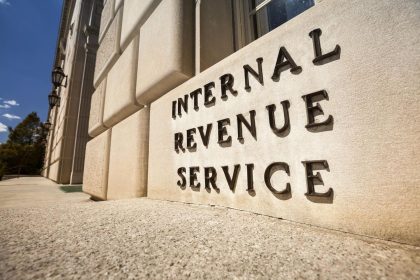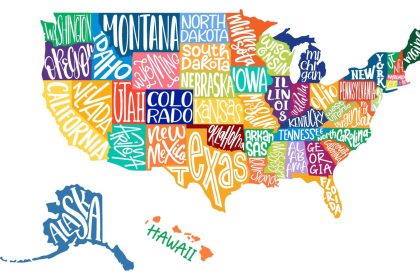Halloween spending is expected to reach $11.6 billion in 2024, just shy of last year’s record-breaking spooky season—that works out to an average of $103.63 per spender. Across spending categories, ghouls and goblins will spend the most holiday funds on candy, with total spending expected to reach $3.5 billion.
You can count me among the 93% of Americans who say they’ll share chocolate and candy with friends and family to celebrate Halloween. Spending at Halloween doesn’t just benefit confectioners like Hershey and Mars, it also adds to state and local tax coffers. However, figuring out the specifics of taxing candy is far from child’s play. Candy is one of the most complicated products to define when it comes to sales tax.
State And Local Sales Tax
On the state level, almost every state imposes some kind of sales tax on certain goods and services. The exceptions are the five sales tax-free states of Alaska, Delaware, Montana, New Hampshire, and Oregon.
In addition to the 45 states that charge some kind of sales tax, local sales taxes are collected in 38 states, raising significant dollars to fund schools and other programs. In 2020, sales taxes generated 32.2% of state tax revenue and 13% of local tax revenue. In some instances, not only are local taxes collected by separate tax authorities, the rates, bases and categories of taxable goods and services can be completely different from those imposed by the state.
Sales Tax On Candy
Often, the imposition of sales and use tax is closely tied to whether an item is essential—that means that groceries and clothing, for example, will often not be subject to sales and use taxes.
While you and I might consider candy a necessity, not all states agree, making the definition of candy a tricky one. Scott Peterson, vice president of U.S. Tax Policy and Government Relations at Avalara, a tax compliance software company, worked firsthand on the committee that tackled candy classifications. The rules are complicated—you can see a list of classifications here—but Peterson says that one ingredient tends to set candy apart from non-candy: flour.
Attempts At Uniformity
In an effort to introduce some semblance of uniformity, the Streamlined Sales and Use Tax Agreement (SSUTA) agreed on a general definition, saying, in 2010, that candy means “a preparation of sugar, honey, or other natural or artificial sweeteners in combination with chocolate, fruits, nuts or other ingredients or flavorings in the form of bars, drops, or pieces.” Under the rules, candy does not include any preparation containing flour and does not require refrigeration.
That means that Kit Kat and Twix don’t make the list—the flour in their cookie bits means they’re not candy. But Hershey’s Kisses? Absolutely.
Also under that definition, classic Milky Way bars (which contain flour) would be tax-exempt, while Milky Way Midnight bars (which do not contain flour) would be taxed.
And while cotton candy doesn’t have any flour, it’s not candy since, under the definition, candy must be found in bars, drops, or pieces.
Most candy lovers would likely agree that cookies aren’t candy. Still, Peterson says that some retailers strategically place candy in specific areas of the store to justify the tax classification. Putting candy near cookies might signal that it’s not candy, while grouping it with other candy might signal otherwise. The trick? Getting an auditor to agree.
That’s where the SSUTA comes in. Its purpose is to simplify and modernize sales and use tax administration, which would substantially reduce the burden of tax compliance. It would be great if all states agreed on this idea—but they haven’t.
Agreeing with the SSUTA does not take the place of existing state laws. However, a state must comply with the requirements to be a member state. Currently, just 24 states have signed on.
Retailer Challenges
The different sales tax rates from state to state, combined with the number of exemptions and special circumstances, confuse not only taxpayers but also retailers. Compliance, says Peterson, can be particularly difficult for mom-and-pop retailers. Some may be under the misimpression, for example, that all grocery store items are exempt from sales tax.
National retailers, he explains, often have both the flexibility and resources to focus on rules that can be complex and narrow. And, he says, larger retailers can spend on systems that rely on automation, making compliance easier.
“It cost a lot of money to be accurate,” he says. “There is no way to do this without investment.”
Software can help, and more retailers are signing on to platforms that can calculate taxes with the click of a button. However, Peterson warns that systems are only as good as their data.
Wayfair
Sales taxes are even more challenging for retailers thanks to a 2018 Supreme Court case called South Dakota v. Wayfair Inc., Overstock.com, Inc., and Newegg, Inc.—usually referred to simply as Wayfair.
For years, only those companies with a physical presence inside a state could be required to collect sales tax. The idea that you could only impose sales tax on sales where a retailer maintained a physical presence in a state had previously been established in cases like Quill Corp. v. North Dakota. But the advent and growth of internet sales complicated the issue—when Quill was decided, fewer than 2% of Americans had access to the internet.
As more people started filling their online shopping carts with items from states other than where they lived, states established their own rules about taxation. The lack of a consistent approach resulted in Wayfair—in the case, the Supreme Court essentially killed Quill, ruling that states have broad authority to require online retailers to collect sales taxes.
It was a big change for retailers who rely on online sales. As a result, states rushed to tweak their laws to collect more revenue from out of state sellers. Since you no longer need a physical presence to claim nexus—the legal term for connection—states have taken a second look at how sales are being made. Of the 45 states with a general sales tax, 43 have adopted an economic nexus law or rule since Wayfair, resulting in more complexity for retailers and consumers alike.
It turns out that figuring out sales taxes for goods and services in person or online isn’t a treat, no matter the season.
(For the record, Peterson’s favorite Halloween candy is candy corn, as is mine. According to Brach’s Candy, there’s no flour in candy corn—so eat up, sales tax-free.)
Read the full article here






